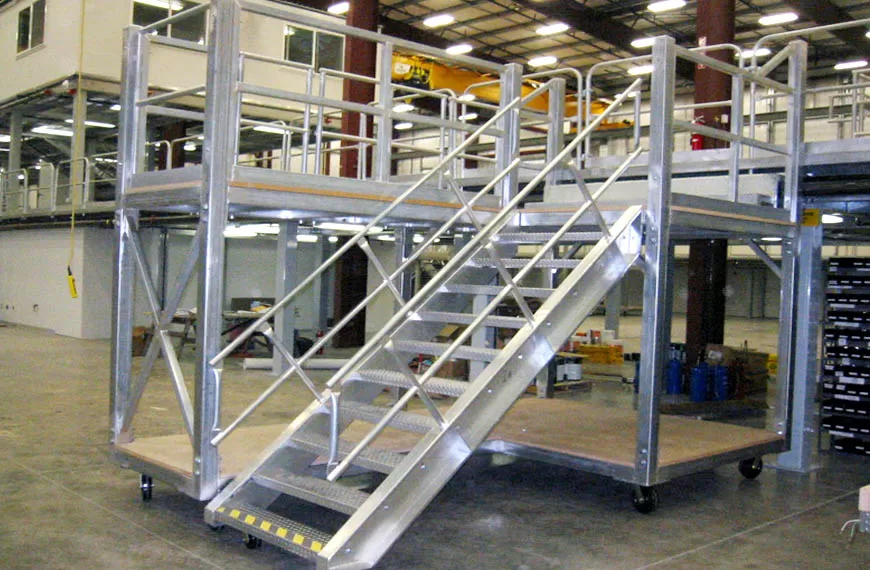
Introduction
In the bustling world of industrial settings, safety isn’t just a priority; it’s a necessity. Industrial working platforms, crucial for accessing elevated areas in factories, warehouses, and construction sites, must adhere to rigorous standards and regulations to ensure the well-being of workers and prevent accidents. Let’s delve into the regulations and standards governing these essential structures.
Understanding Industrial Working Platforms
Industrial working platforms, commonly referred to as mezzanines or elevated work platforms, provide additional space for various activities within industrial facilities. They serve as storage areas, assembly lines, or observation decks, facilitating efficient operations in vertical spaces. However, their design, construction, and maintenance are subject to stringent regulations to mitigate hazards.
The Importance of Compliance
Compliance with regulations and standards is paramount to ensure the safety and structural integrity of industrial working platforms. These guidelines encompass various aspects, including structural design, load capacity, access points, and safety features such as guardrails and handrails.
Regulatory Framework
Regulatory bodies and standards organizations worldwide have established comprehensive frameworks to govern the design, installation, and usage of industrial working platforms. These regulations aim to minimize risks associated with falls, collapses, and other workplace accidents, thereby safeguarding workers’ well-being.
OSHA Standards in the United States
The Occupational Safety and Health Administration (OSHA) in the United States mandates strict guidelines for industrial mezzanines under its General Industry Standards (29 CFR 1910). These standards outline requirements for structural integrity, guardrail systems, access points, and load capacities based on engineering principles and safety considerations.
European Union Directives
In the European Union, industrial working platforms fall under the Machinery Directive (2006/42/EC), which sets essential health and safety requirements for machinery and equipment. Additionally, specific standards, such as EN 1090 for structural steelwork, govern the fabrication and installation of mezzanines to ensure compliance with safety norms.
International Building Codes
Internationally, building codes and standards, such as the International Building Code (IBC), provide guidelines for the construction and use of industrial platforms. These codes address structural design, fire safety, egress requirements, and accessibility, offering a holistic approach to workplace safety across borders.
Key Considerations in Design and Installation
Designing and installing industrial working platforms require meticulous planning and adherence to regulatory guidelines. From structural calculations to material selection, several factors influence the safety and functionality of these elevated structures.
Structural Engineering Principles
Structural engineers play a crucial role in determining the load-bearing capacity and stability of industrial platforms. By conducting thorough analyses and simulations, they ensure that the design meets safety standards and can withstand anticipated loads and environmental conditions.
Material Selection and Fabrication
Choosing the right materials, such as structural steel or aluminum, is essential for constructing durable and resilient industrial platforms. Fabrication processes must comply with industry standards, ensuring precision and quality in manufacturing components like beams, columns, and decking materials.
Safety Features and Access Equipment
Integrating safety features, including guardrails, toe boards, and safety gates, is imperative to prevent falls and accidents on industrial platforms. Additionally, providing safe access points, such as stairways, ladders, or personnel lifts, enhances usability while prioritizing worker safety.
Compliance Maintenance and Inspections
Ensuring ongoing compliance with regulatory requirements involves regular maintenance, inspections, and risk assessments of industrial working platforms. By identifying potential hazards and addressing maintenance issues promptly, employers can create a safer work environment and mitigate liability risks.
Routine Inspections and Audits
Periodic inspections by qualified personnel help identify wear and tear, structural defects, or safety hazards that may compromise the integrity of industrial platforms. These inspections include visual assessments, load testing, and non-destructive testing methods to verify compliance with standards.
Training and Safety Awareness
Equipping workers with adequate training on platform usage, safety protocols, and emergency procedures is essential to prevent accidents and injuries. Promoting a culture of safety awareness fosters proactive hazard reporting and empowers employees to prioritize safety in their daily tasks.
FAQs (Frequently Asked Questions)
What are the main regulations governing industrial working platforms?
The main regulations include OSHA standards in the United States, European Union directives, and international building codes.
How often should industrial platforms undergo inspections?
Industrial platforms should undergo routine inspections at regular intervals, typically annually or semi-annually, depending on usage and environmental factors.
What are some common safety features of industrial platforms?
Common safety features include guardrails, handrails, toe boards, safety gates, and access equipment such as stairs or ladders.
Can industrial platforms be customized to specific requirements?
Yes, industrial platforms can be customized to accommodate specific layout constraints, operational needs, and safety requirements of different industries.
How can employers ensure worker safety on industrial platforms?
Employers can ensure worker safety by providing adequate training, implementing safety protocols, conducting regular inspections, and fostering a culture of safety awareness.
Are there any international standards for industrial platform design?
Yes, international standards such as ISO 14122 provide guidelines for the design, construction, and safety of industrial access platforms worldwide.
Conclusion
In conclusion, ensuring compliance with regulations and standards is paramount in the design, installation, and maintenance of industrial working platforms. By prioritizing safety, adopting best practices, and staying abreast of evolving regulations, employers can create a safer work environment and protect the well-being of their workforce.
